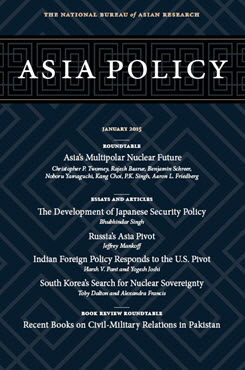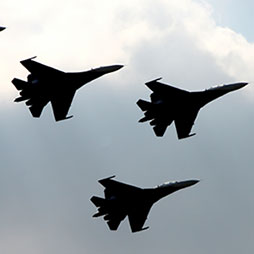Approaching Critical Mass
Asia's Multipolar Nuclear Future
Is the world approaching “critical mass,” a point at which the number and size of nuclear arsenals and the dangers associated with them will grow with explosive speed? In this roundtable, leading scholars discuss the nuclear security environment in Asia and draw implications both for U.S. policy and the international order.
Is the world approaching “critical mass,” a point at which the number and size of nuclear arsenals and the dangers associated with them will grow with explosive speed? In this roundtable, leading scholars discuss the nuclear security environment in Asia and draw implications for U.S. policy and for the international order.
Introduction: Dangerous Dynamism in Asia’s Nuclear Future
Christopher P. Twomey
Nuclear Stability and Polarity in Post-Cold War Asia
Rajesh Basrur
China’s Development of a More Secure Nuclear Second-Strike Capability: Implications for Chinese Behavior and U.S. Extended Deterrence
Benjamin Schreer
The Utility of Nuclear and Conventional Forces in the Second Nuclear Age: A Japanese Military Perspective
Noboru Yamaguchi
The North Korean Nuclear Problem: Twenty Years of Crisis
Kang Choi
The India-Pakistan Nuclear Dyad and Regional Nuclear Dynamics
P.K. Singh
The Evolving Nuclear Order: Implications for Proliferation, Arms Racing, and Stability
Aaron L. Friedberg
About Asia Policy
Asia Policy is a peer-reviewed scholarly journal presenting policy-relevant academic research on the Asia-Pacific that draws clear and concise conclusions useful to today’s policymakers. Asia Policy is published quarterly in January, April, July, and October and accepts submissions on a rolling basis. Learn more



